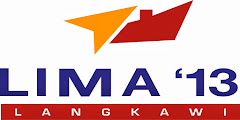 Australia's M-1 Abrams (photo : Australian DoD)
Australia's M-1 Abrams (photo : Australian DoD)Adaptive Campaigning Army
Since East Timor the Army has constantly sustained one to three battalion groups on deployed operations, providing both high levels of field experience and significant logistical challenges. To evolve to meet the new operational environment the Army has raised a special operations command, transformed from a light infantry to medium armoured force and expanded from eight to twelve battalion groups with supporting units. The latest initiative, the Adaptive Army, has seen the traditional multi division, field corps structure change to a rotating structure. Units are allocated to Forces Command to carry out reconstitution and training between deployments. They are then transferred to the 1st Division under command of the ADF’s Joint Operations Command for mission rehearsal exercises (MRE) at the expanded combat training centre and the operational deployment. While modernising its artillery and infantry systems with new more lethal and networked battle management systems (BMS) it is in armoured vehicles where the most significant change is happening.
The GDLS ASLAV armoured vehicle has borne the brunt of operations in Iraq and Afghanistan. LAND 112 Phase 4 will provide an extensive ASLAV mid life upgrade (MLU) to include a new armoured hull structure with enhanced protection, a defensive aid suite (DAS) and an improved power pack to restore mobility despite weight increases. The new hull is in system design and development (SDD) stage before production approval between 2011-13 for entry into service in 2014-16. The DAS will include a hard kill active protection system (APS) which will be demonstrated from March 2010.
 Australia's ASLAV and Bushmaster (photo : Australian DoD)
Australia's ASLAV and Bushmaster (photo : Australian DoD)To replace the ASLAV and M113AS4 armoured personnel carrier a new Combat Vehicle System will be acquired under LAND 400 with approval for go ahead of a tender process expected in 2016. A total of 1,100 infantry fighting vehicles (IFV) will be acquired to equip six battalion groups in both armoured cavalry and mechanised infantry roles. While a common vehicle is planned for both roles there are differing views on what it should be with the cavalry preferring a fast wheeled vehicle and the infantry a tracked vehicle able to survive multiple attacks without loss of mobility. The common requirement is for an IFV with an integrated BMS and part of a large international supply base to lower support costs. LAND 400 will also acquired unmanned vehicles – both ground and air mobile – if they can replace currently manned vehicle systems. Later phases of project will replace the various armoured and protected combat support and infantry mobility vehicles like the Thales Australia Bushmaster.
“The Army’s extensive fleet of 7,000 Landrovers and trucks will be replaced by a mixed fleet of armoured vehicles, traditional field vehicles and commercial trucks. Project LAND 121 Phase 3 has already selected Mercedes Benz to supply 600 4x4 and 660 6x6 G-Wagen unarmoured light trucks with the first deliveries in February 2010. The initial selection of BAE Systems to supply around 2,500 4x4, 6x6 and 8x8 FMTV medium and heavy field trucks was rejected after recognition that medium weight class trucks could not carry both their cargo and the high levels of crew protection needed and the immaturity of the 8x8 FMTV.

Hawkei tactical vehicle 4x4 (photo Thales)
Subsequently Thales Australia has been selected for further offer development to supply 980 Copperhead utility versions of the Bushmaster armoured 4x4. The second round of offers for trucks from BAE Systems (replacing the 8x8 FMTV with a 8x8 Scania), MAN, Thales Australia (partnered with Oshkosh), MAN and Mercedes Benz was short listed in early 2010. The MAN HX family will compete with the Mercedes Benz Zetros and Actros to provide 1,020 unarmoured trucks and 515 with heavily armoured crew cabins. An additional 1,060 G-Wagens or similar commercial light trucks will be purchased under Phase 5 along with 1,070 commercial medium and heavy trucks to replace the last legacy vehicles for domestic training duties only.
LAND 121 Phase 4 will acquire 1,300 Protected Mobility Vehicles – Light (PMV-L) in the 6-8 tonnes class. This project is following three possible procurement approaches including partnership with the massive US Joint Light Tactical Vehicle (JLTV) project, domestic design and/or production and off the shelf acquisition. If the Australian option can provide a cost effective and capable vehicle compared to the JLTV it will be acquired. Responses to this requirement include a new vehicle designed by Thales Australia with Plasan Sasa called the Hawkei and Australian builds of the Oshkosh MATP or SandCat and Force Protection’s Ocelot.”
(Asian Military Review)










Tidak ada komentar:
Posting Komentar